The CAD-CAM 3000 Ltd. and the Formula Student
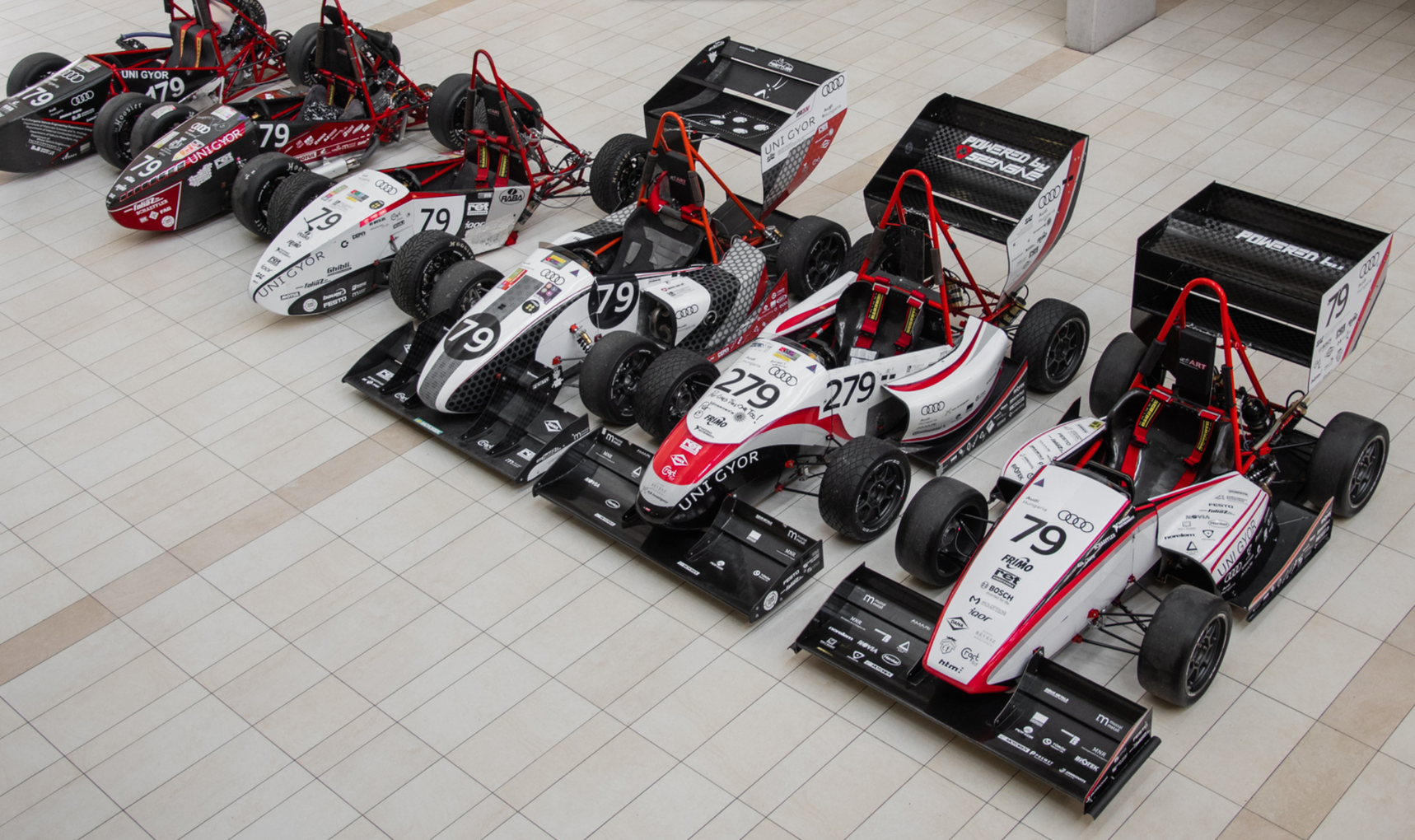
Formula Student
The Touring Car, the Rally, the Nascar, the 24 Hours of Le Mans, the Go-Kart or Formula 1 are all series of car races that almost everyone has heard of. However, the Formula Student – which is a car racing series between students and technical universities – isn’t so well known. There are only few people in the technical world who have at least fleetingly not heard of the Formula Student competition series during their studies or engineering career, as the top Hungarian universities, such as the Budapest University of Technology and Economics, the University of Miskolc, the John von Neumann University of Kecskemét and the Széchenyi István University of Győr are active participants of the derby that primarily focuses on engineering solutions. We are proud to say that from this year we can be part of this car racing series through our collaboration with SZEengine.
SZENGINE
The SZEngine Engine Development Team was established by the AUDI Hungaria Department for Internal Combustion Engines in cooperation with the Engine Development Department of AUDI Hungaria and the students of Széchenyi István University at the end of 2008. The team has developed a globally unique, innovative engine that is specifically optimized for the strict rules of the racing series and therefore it is uniquely connected to the Formula Student. The team focuses on the development of single-cylinder internal combustion engine concepts, because this design has the best power-to-weight ratio and the most favorable consumption. There are separate departments for the design, the thermodynamics, the electronics, the brake pads, the engine testing and from this year for the hybrid drive train development, too. The team of about 60 people has been cooperating as engine supplier with the Arrabona Racing Team from Győr since 2016.
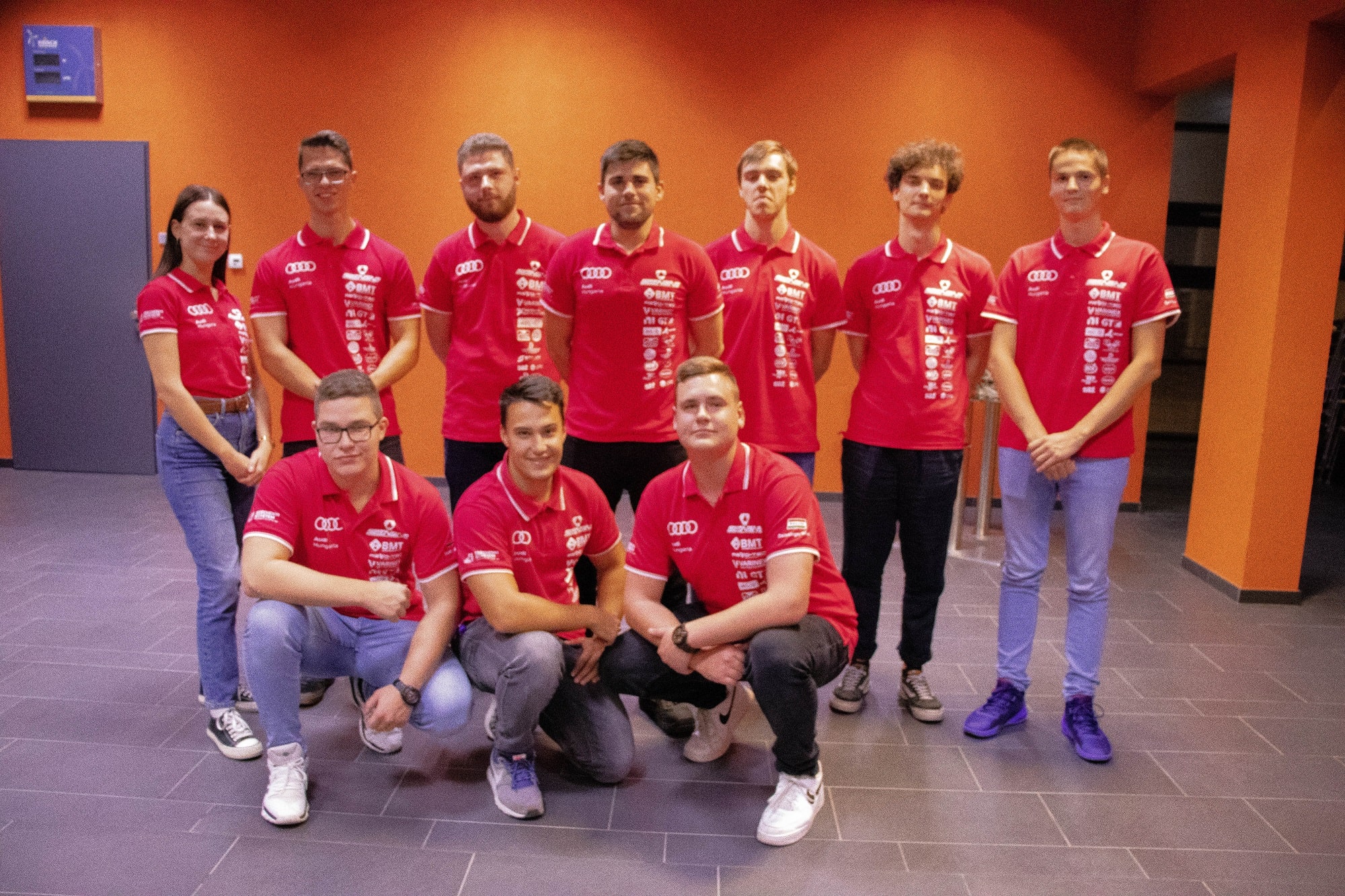
The SZEngine team currently envisions the design of the powerplant for the new 8th generation formula car called ART_08 with a major or minor re-modelling of a KTM 690 Duke engine.
Reverse engineering with the help of the CAD-CAM 3000 Ltd.
Firstly this required the optical and radiological measurement of the engine and the re-modeling of the components based on the measurement grid. To re-model the parts, they looked for a sponsor who had the appropriate knowledge, experience and tools in the field of reverse engineering. This is how they’ve found the CAD-CAM 3000 Ltd. at the end of 2020.
 Clutch cover measuring mesh (left) and the model based on it (right)
Clutch cover measuring mesh (left) and the model based on it (right)
Our engineers were contacted by Dániel Deissinger, the Head of the Design Department at the SZEngine Engine Development Team last year. After the negotiations we have continuously assisted the work of the team with modeling techniques, with model building, with the creation and integration of support geometries into the coordinate system, as well as with the examination of the finished models and with the proposal of modifications.
Arrabona Racing Team
The Arrabona Racing Team from Győr has been an active participant of the car racing series of university students since 2014 and they managed to win the Formula Student Russia with their car named ART_01 already in the first year, which made them the first Hungarian Formula Student team who won the overall first place in a Formula Student competition. Since then 7 more further improved constructions have been designed at the Széchenyi István University of Győr in the last years. Almost all of them managed to won the first place or a podium position in one of the racing series.
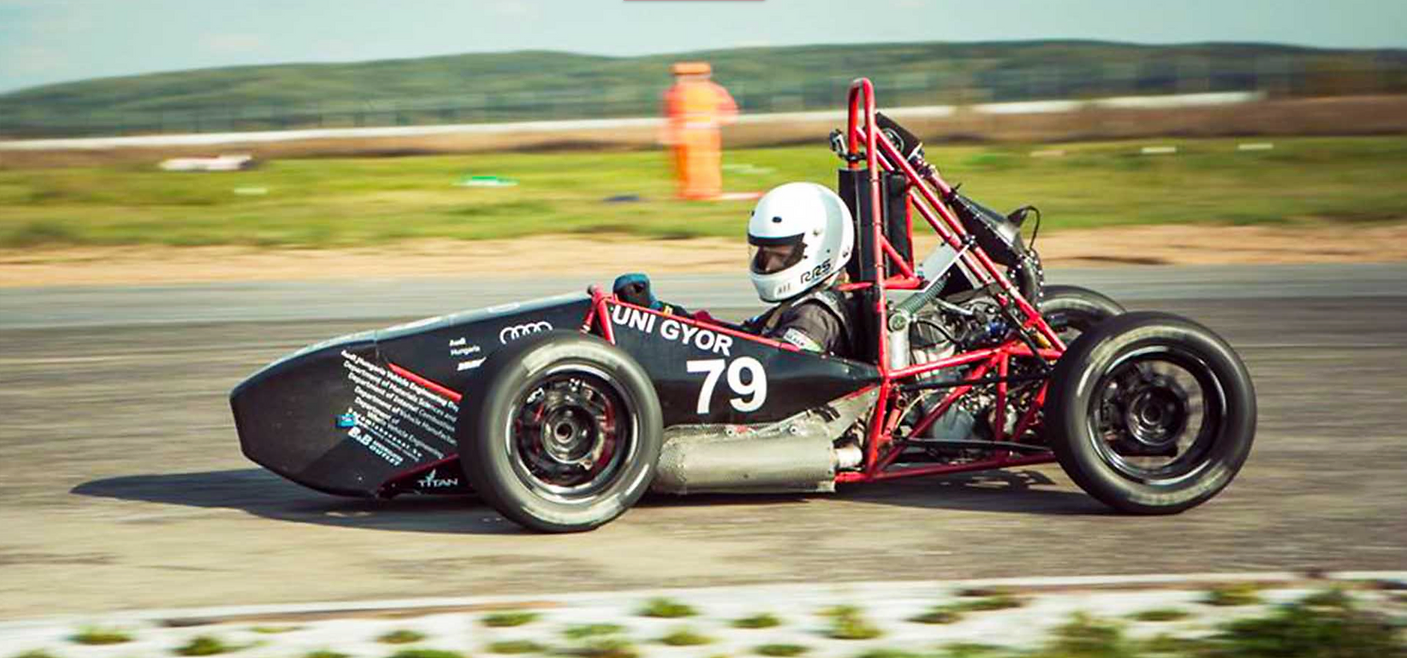
Source: https://www.arrabonaracing.hu/
FUNDRIVE
When I met the SZEngine one of my first questions was when I can try the car. I meant it as a joke, but they quickly gave me a surprising answer: there is a sponsorship day every year where you can check out the new and old cars and you can even try them for a few rounds.
The sponsorship day called FunDrive was held by the Arrabona Racing Team in October. This was the first year when we could attend this event and had the chance to try the cars called ART_02 and ART_08.

Of course, we weren’t allowed to compete with each other either, but we were able to test the cars in a large enough area to feel their incredible acceleration and speed. The cars take the bends stably and they are agile in the straight lines – by the way the ART_08 covers 75 meters in 4 seconds. We didn’t overstrain the machines, there was probably a lot more in them, but it was still a fantastic experience to try both generations.
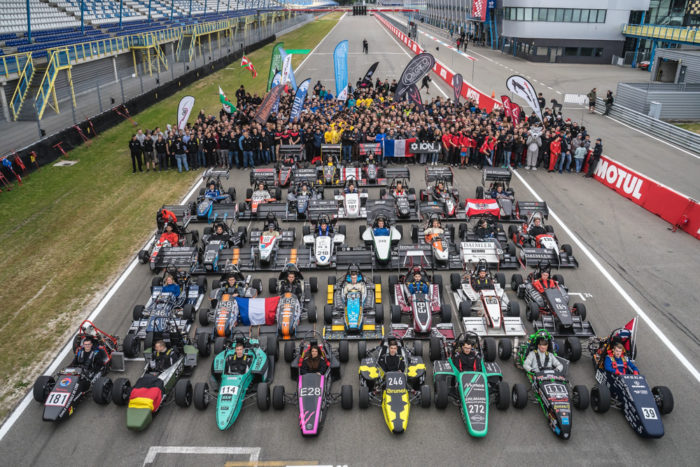
Source: https://www.facebook.com/formulastudenteast/
The history of the race
By the way the first official Formula Student competition was held in 1981 on the campus of the University of Texas, with only 4 American universities participating at the time. The first European racer joined the competition in 1997, and the first European competition became the part of the series in 1998, but since then more than 600 universities from 70 countries have taken part in the event in 20 different locations – including 10 European ones.

Source: https://en.wikipedia.org/wiki/Formula_SAE
This is not a classical car racing series since university teams don’t design and build cars from their own budgets, but with the support of sponsors, so it would be quite expensive to smash the cars in the heat of the racing. Therefore, the final order will be determined on the basis of the results of 3 static and 5 dynamic events in each race, which are the following:
Static events (max. 325 points):
Business Presentation (max. 75 points):
In the presentation, a convincing business model about the car should be presented to the jury as a group of potential investors.
Cost and Manufacturing (max. 100 points):
In this event the team must demonstrate the manufacturing processes and costs involved in the building of the car prototype, broken down into parts and components.
Design Event: (max. 150 points):
The decision-making processes that occurred during the design of the car and the solutions to specific problems should be introduced to the judges in this event. The emphasis is primarily on the reasoning of decisions and on the engineering mindset. The solutions implemented on the basis of Formula Student rules are only secondary.
Dynamic events (max. 675 points):
Acceleration (max. 75 points):
The acceleration event is where teams try to make their car complete a 75-meter straight line as quickly as possible.
Skid pad (max. 75 points):
In the skid pad event the pilots must drive a figure of a 8-circuit as fast as possible – twice clockwise on the first circuit and twice in the opposite direction on the other circuit. Here, the most important thing is how optimal the chassis setting is and how durable the suspensions are.
Autocross (max. 100 points):
In the autocross event the teams have to complete an almost 1.5-kilometer track that’s full of slaloms and curves as fast as possible. Beyond the value of the individual race, this event also qualifies the teams for the Endurance event.
Endurance (max. 325 points):
Endurance is the Formula Student’s most important event. In this car and driver endurance test, a distance of 22 km must be completed and the pilot has to be changed at the midpoint.
Efficiency (max. 100 points):
If the Endurance event got successfully completed, the fuel consumption of the car will be calculated. In Efficiency event the fuel usage is compared to the time spent on laps – i.e. it will be measured how efficiently the team used the available fuel.
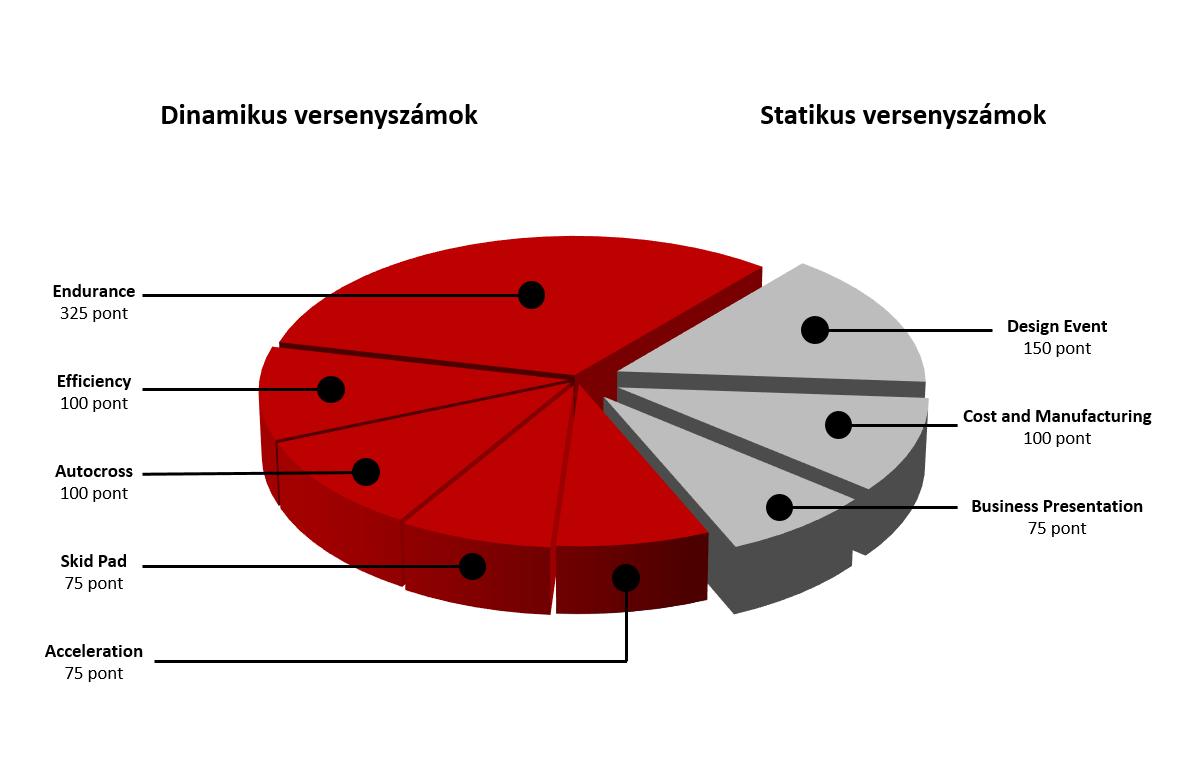
Source: https://szengine.hu/formula-student/
Based on these facts it’s clear that this is a very interesting and complex car race that is likely to become even more exciting in the future. We are very glad to be a part of this excellent project. After seeing first-hand what fantastic cars the students of the Széchenyi István University of Győr have built, we are even more proud to continue supporting the engineers of the future and the Formula Student race series. Thanks to SZEngine and the Arrabona Racing Team for the opportunity, and we promise not to take our feet off the gas pedal next year!
Do you also need the help of an engineering office in reverse engineering, 3D optical measurement, product design, finite element simulation, tool and special purpose machine design or in prototype construction? ? Then contact us here!